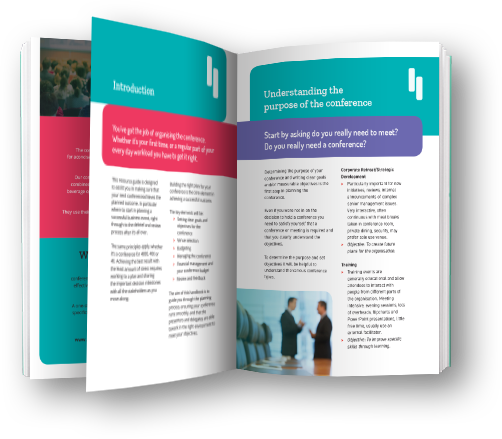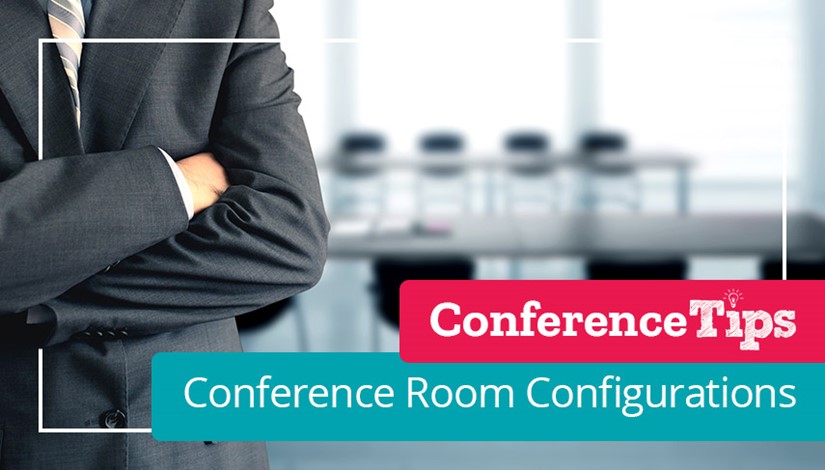
Effective communication depends on the style or configuration of the room and will also depend on the number of delegates as well as the presenter’s preferred style. Remember that certain room configurations have limitations.
Which Conference Room Configuration is right for you?
Boardroom, U-shape and Clusters provide open and active interaction and are ideal for groups of up to about 60 people.
The communication style for groups larger than 60 changes because − regardless of the seating style − delegates can no longer communicate with everyone present. Classroom, Theatre and Cluster configurations work best in these situations.
What to be aware of.
Be aware that some venues claim that a certain number of people can be seated in a specific conference room without considering seating style and comfort. It’s important to check the room during a site inspection to ensure it’s going to be comfortable for the number of people you expect. It’s important for delegates to be able to get up and around without having to wiggle their way out of their seat.
Comfort is crucial, especially when delegates could be sitting for five or six hours. Let’s face it, fidgeting delegates don’t make good listeners or willing participants. Also, avoid banquet chairs for conferences or meetings that go for more than two hours. Most conference centres and auditoriums have the appropriate seating but it’s important to check.
In terms of the surface top for conference room tables, a hard surface is preferred. However, tablecloths do offer modesty skirt protection if the table does not have that feature.
Types of Conference Room Configurations
In preparation for your next event consider the configuration of your Conference Meeting Room.
The objectives of your conference, the number of delegates and the form of communication are only some of the important aspects to consider.
*For illustrative purposes, the top of the configuration images is the front of the room
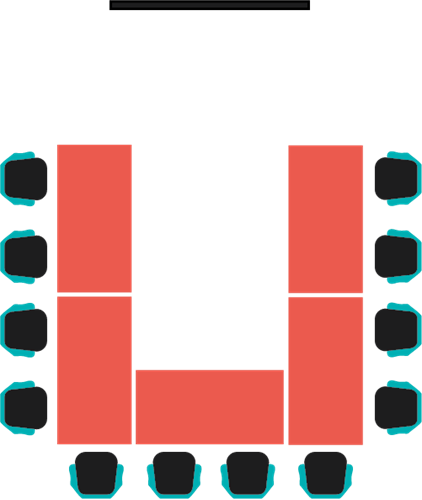
U-Shape
Very popular set up for groups where close interaction will occur. Gives participants the sense they are all equal in status at the meeting. Good visual access to front for visual presentations. A variation is the double U (a U within a U) or with seating on the inside of a single U. These variations can increase seating by up to 50%.
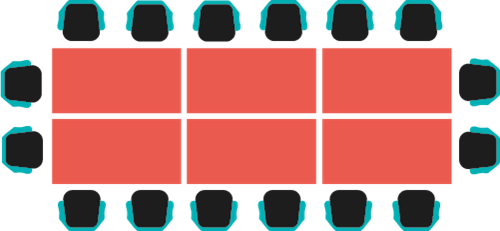
Boardroom
Ideal for small groups where close interaction and a lot of discussion are expected. Participants can see and hear each other easily and sharing one table creates unity of the group. Some participants will need to move when visual presentation is made. Most effective with groups of less than 20.

Clusters
Round tables seating 6 to 10 people are good for small group discussions and projects. Allows maximum participation within groups. Allows breakout and small group work without participants leaving the room or re-arranging furniture. Ideal for groups of 60 to 100.
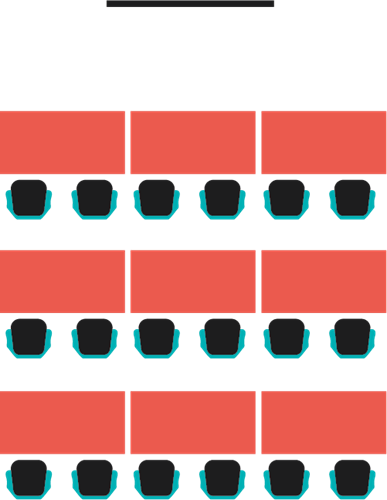
Classroom
This traditional layout does allow many people to fit comfortably in a room. It is a well-used setup and is effective for one way communication. The classroom style setup provides a work surface for note taking and for reference materials. Best for large groups.
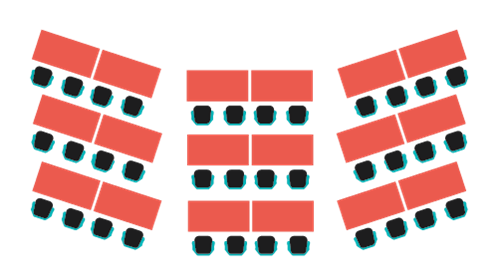
Chevron Classroom
This style is similar to the classroom setup with the tables tilted towards the front placing each row the same distance from the presenter. A variation of this style eliminates the centre row of tables.

Theatre
Just like going to the theatre, ideal for large numbers. One way communication occurs in this setup and is ideal for audiovisual presentations and lecture style programs. Sound amplification may be needed in larger rooms.

